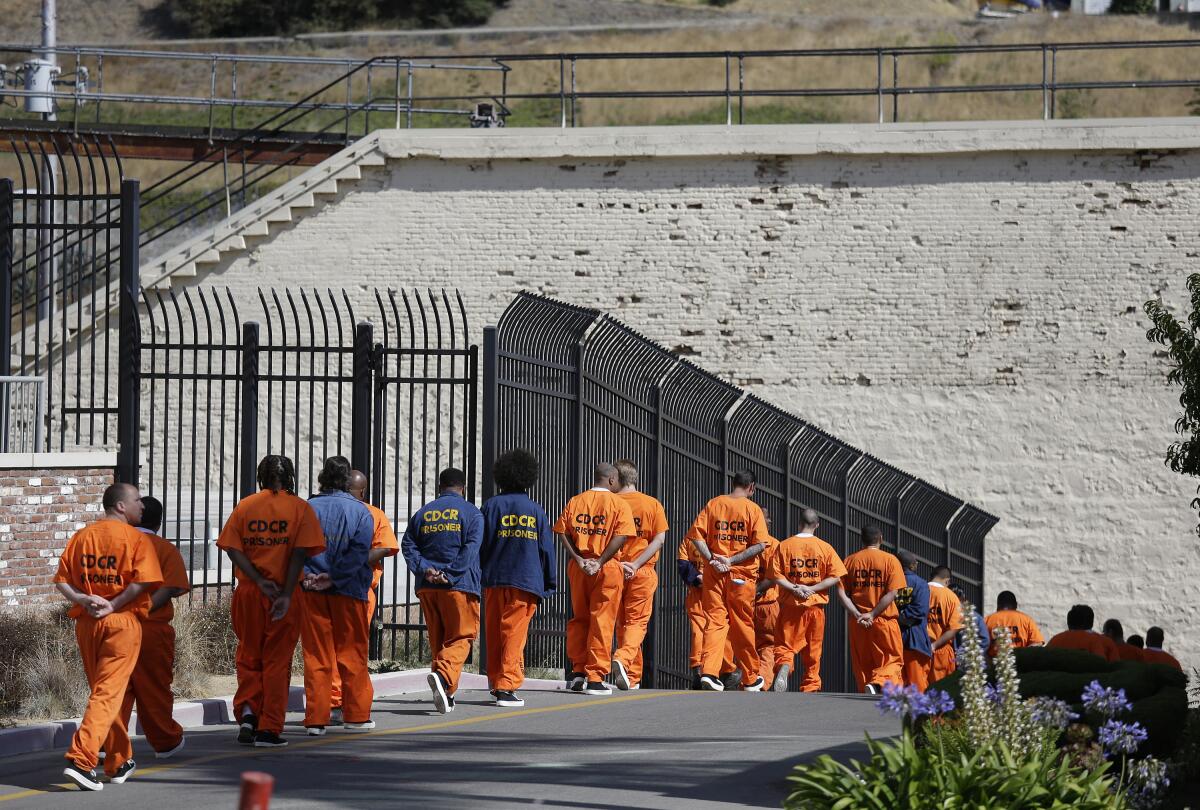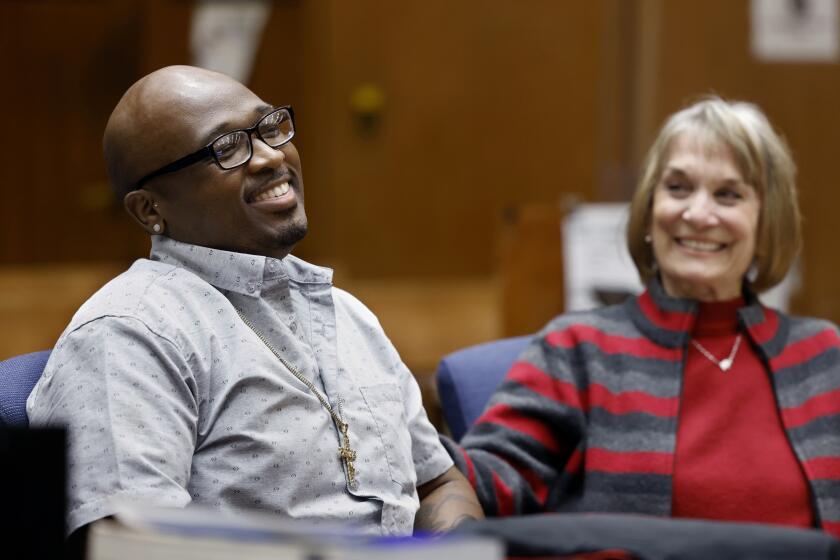The legacy of California’s ‘three strikes’ law is 30 years of wasted spending and ruined lives

- Share via
The symbol of sentencing excess in California could be an extra-large slice of pepperoni pizza, taken from four youngsters on the Redondo Beach Pier.
The petty theft resulted in a sentence of 25 years to life in prison for Jerry Dewayne Williams because he had a record that included two serious or violent felonies — and because several months earlier, California lawmakers had passed the “three strikes” law, meant to forever remove so-called career criminals from society.
That legislation was signed into law 30 years ago, on March 7, 1994.
As long as the law stands, the state Supreme Court should make clear that prosecutors can use their discretion to decline three-strikes enhancements.
By that time, the crime surge of the 1980s had already crested, and crime had begun its historic plunge. Still, voters in the state of Washington adopted a “three strikes” law, and two particularly horrific California murders — those of 18-year-old Kimber Reynolds and 12-year-old Polly Klaas — inspired a similar initiative proposal here. Before the measure reached voters, California lawmakers rushed their own version to the governor, who signed it into law. Voters then approved the initiative, adopting the law a second time.
A host of tough-on-crime measures followed from both Republicans and Democrats, even as crime continued its free fall. Police spending skyrocketed. The 1994 federal crime bill, shepherded through the U.S. Senate by then-Sen. Joe Biden of Delaware and signed into law by President Clinton, included a “three strikes” provision. More than 20 other states also adopted versions of “three strikes.”
California has seen the damage harsh sentencing laws produce. Proposition 20 would strike a blow to justice in the state.
But none were as rigid as California’s, which doubled the sentence for a second strike, and considered any felony, even if not serious or violent, a third strike. The Times has opposed “three strikes” from the beginning, warning that it would fill prisons and devastate the state budget.
Costs included larger payrolls for prison guards, whose union lobbied both for raises and for longer sentences. The toll also rose for families and communities that suffered the most from the loss of parents to prison, not for murder or rape but for mid-level crimes that may well have required some incarceration, but not decades’ worth.
Defenders of the “three strikes” law correctly note that Williams served only five years after he asked a judge for a sentence reduction. And they point out that Proposition 36, passed by voters in 2012, rewrote the law to require the third offense to be serious or violent, just like the first two. No more life sentences for petty theft, right?
A decade after it was enacted, California’s three-strikes sentencing law has had little impact on violent crime while costing taxpayers $8 billion to imprison tens of thousands of felons, most of them for nonviolent offenses, according to a study released today.
But there are several problems with those arguments. Although a jury rejected the D.A.’s robbery charges and convicted Williams of the lesser charge of petty theft, another jury might easily send a third striker away for life for doing exactly the same thing. Many crimes charged as robberies fall well short of the stereotypical holdup at an ATM or convenience store. Life terms for stolen pizza, even purse-snatchings, are excessive, even if those crimes do require some incarceration. A substantial body of evidence shows that after a few years, the dissuasive power of prison reverses and the risk of new crimes increases.
That’s equally true for second strikers, who also serve gratuitously long terms under the uniquely California provision that doubles every sentence for a second serious or violent felony. Studies show second strikers to be at greater risk of reoffending than they would be after serving shorter sentences. Of the 93,560 people in California state prisons at the end of February, nearly 23% — or 21,320 — were second strikers, few of whom committed murder or other crimes that already carry long sentences. Many could, and should, be safely released, and the $132,000 per year that California spends on each to keep them locked up could be spent instead on programs to prevent crime in the first place.
The exonerations of Jofama Coleman, Abel Soto and others should remind us of the dangers of elevating fear and vengeance over justice.
Later this year, the state Supreme Court is expected to hear arguments in a lawsuit brought against Los Angeles County Dist. Atty. George Gascón by the L.A. County prosecutors’ union for following through on his campaign promise to not seek double or life terms under the “three strikes” law. Of the 11 candidates who challenged him in the March 5 race, seven are either current of former union members and one is on the union’s legal team for the lawsuit.
Meanwhile, President Biden, who now repudiates parts of the 1994 crime bill, is facing an election rematch with Donald Trump, who signed a federal law reversing some sentencing excesses — but who gets lots of political mileage from false declarations about rampant crime.
Lawmakers aren’t letting the lack of useful data on the causes of retail theft stop them from pushing solutions to a problem they can’t define.
Crime levels continue their descent following a significant pandemic-related spike. Yet lawmakers try to display their public safety bona fides by debating rollbacks of key criminal justice reforms, and voters consider whether to stick with, or jettison, reform-oriented D.A.s like Gascón. And, three decades later, we have yet to unwind the destructive excess of gratuitously long sentences.
That task can be completed only with another ballot measure, this time to repeal or drastically modify “three strikes.” In the meantime the task of chipping away at its injustices and inefficiencies falls to district attorneys — and the California Supreme Court.
More to Read
A cure for the common opinion
Get thought-provoking perspectives with our weekly newsletter.
You may occasionally receive promotional content from the Los Angeles Times.












